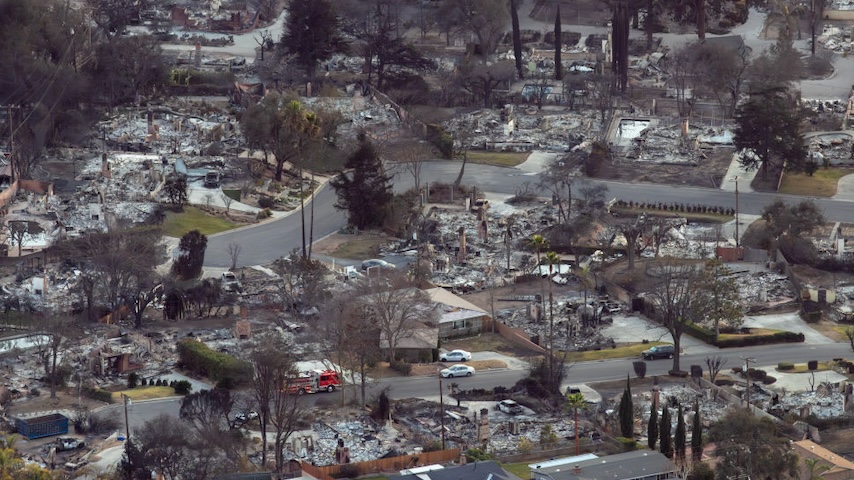The Flames Are Not Done With Los Angeles Yet
Photo by David McNew/Getty Images
The numbers are already staggering: At least 24 people dead, with at least 16 others missing and the toll likely to rise; close to 40,000 acres burned; more than 12,000 structures destroyed or damaged; at least 150,000 under evacuation orders at various points; an eventual cost well into the tens and probably hundreds of billions of dollars, and potentially the costliest disaster in U.S. history, at least according to California’s governor.
And it’s not over. “We are not in the clear as of yet, and we must not let our guard down, as we have, right now, extreme fire behavior,” said L.A. Fire Department Chief Kristin Crowley, during a news conference on Monday. Though the strong winds that helped fan the flames last week died down at various points over the past few days, the National Weather Service has once again issued a “Particularly Dangerous Situation” alert for parts of the Los Angeles and Ventura counties. The winds are expected to pick back up later on Monday and into Tuesday; the NWS’s warning begins at 4 am Tuesday and stretches through Wednesday at noon.
Some places will see wind gusting to 70 mph, and relative humidity continues to drop to as low as eight percent, offering the fires perfect conditions to spread. Still, there has been progress; the Palisades fire has not grown significantly the past few days, and the number of people under evacuation orders has dipped down to around 92,000 at latest count — though those orders may spread further in the next day or two. “It’s not over yet,” Cal Fire’s operations chief Christian Litz said earlier on Monday. “The wind might kick up sparks.”
There is something to the immediacy of a fire, as with many other disasters — you run away from its approach, it burns through, you come back and see the destruction in its wake, a quick-hit slap to the face with potentially catastrophic outcomes. There is something else, added on, when the event stretches like this, closing in on a week of oncoming flames, red-tinged views across hills and canyons, choking smoke blowing across otherwise unaffected neighborhoods — less a slap and more a squeeze, a turn on the rack, wondering if it will get worse before it ends.